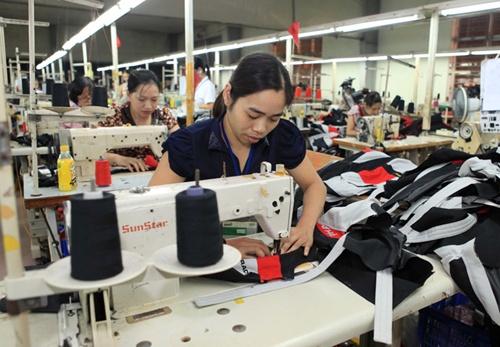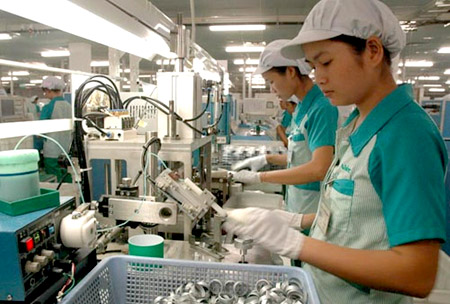State-run Vietnamese firms’ debts total $70bn in fiscal 2014: report
State-run Vietnamese firms’ debts total $70bn in fiscal 2014: report
Vietnam’s state-run enterprises borrowed a total of VND1,567 trillion (US$69.96 billion) in the fiscal year ending September 2014, the government said in a recent report submitted to the lawmaking National Assembly.

The debts rose eight percent from the 2013 fiscal year, at a time when most state-run firms posted earning drops and modest growth rates in revenue, according to the report.
In the 2014 fiscal year, the government guaranteed a total of VND124.1 trillion ($5.54 billion) worth of foreign debts for state enterprises, up around VND2 trillion ($89.29 million) from a year earlier, the report said.
These government-backed debts will threaten national financial security if state-run enterprises fail to improve their poor business performance, economic experts warn.
Besides bank loans, many state companies also issued bonds to raise money of their own accord, the report noted.
Vietnam’s coal giant Vinacomin, for instance, issued as much as VND12.5 trillion ($558.04 million) worth of bonds, whereas Becamex, an infrastructure and industrial park developer, raised VND7.2 trillion ($321.43 million) via bonds.
Many state-owned enterprises therefore had a debt-to-equity ratio far larger than three, which is the safe limit.
The Vietnam Machinery Installation Corporation (LILAMA) posted a ratio of 11.67, whereas the respective figures of the No.36 Corporation and Song Da Corporation, both major construction firms, were 11.01 and 10.03.
The report also names several big borrowers of local banks, including oil and gas giant PetroVietnam, which owes around $8 billion in bank loans, Electricity of Vietnam (some $5 billion), and Vinacomin, more than $2 billion.
The state-run enterprises also borrowed over VND381 trillion ($17.01 billion) from foreign lenders in fiscal 2014, with Vietnam Airlines, PetroVietnam and Airports Corporation of Vietnam being the biggest debtors.
The national flag carrier owed VND27.34 trillion ($1.22 billion) in foreign debts, while the respective liabilities of the oil and gas behemoth and the operator of the country’s airports were VND20.30 trillion ($906.25 million) and VND12.13 trillion ($541.52 million).
The report also reveals massive unsold inventories of the state companies, and names 19 enterprises that collectively incurred more than $1 billion in losses.
Firms say ‘debts under control’ while experts worry
Ngo Minh Hai, from the Central Institute for Economic Research and Management, is concerned that the $5.54 billion in foreign debt guaranteed by the government will become public debt if the borrowers fail to clear their liabilities.
Hai reiterated the case of Vinashin, the erstwhile shipbuilding firm that was dissolved over bankruptcy in 2013, after which the government had to repay $211.4 million of its foreign debt.
“Even though state firms have big earnings, the pressure to repay debt is not small and enterprises can easily fall into hardship after a few unsuccessful projects,” he warned.
Dr. Vu Dinh Anh, a seasoned economist, said a high debt-to-equity ratio is a huge risk for state-run enterprises.
“When you have to borrow ten times more than what you have, how can you manage to repay the debt when your business goes wrong?” he wondered.
Even so, many state enterprises say loans are a must for businesses, and most of their debts are “well under control.”
“Few firms can operate on their own equity without having to borrow money,” Le Van Tuan, general director of LILAMA, told Tuoi Tre (Youth) newspaper.
LILAMA posted a 11.6 debt-to-equity ratio in the 2014 fiscal year, which Tuan said is due to its small equity, around VND700 billion ($31.25 million), while it continued signing contracts worth as much as $1.4 billion.
“A recent inspection by the Ministry of Finance indicated that our debts are under control,” he added.
Meanwhile, Nguyen Van Bien, deputy general director of Vinacomin, said the VND46.17 billion ($2.06 million) worth of bank debts the company has to pay is not really an issue.
“Our debt-to-equity ratio is 2.7, still below the safe limit of three,” he said.
“Most of our loans are used for production and business purposes and we may continue borrowing.
“But we will keep the ratio under three.”





















